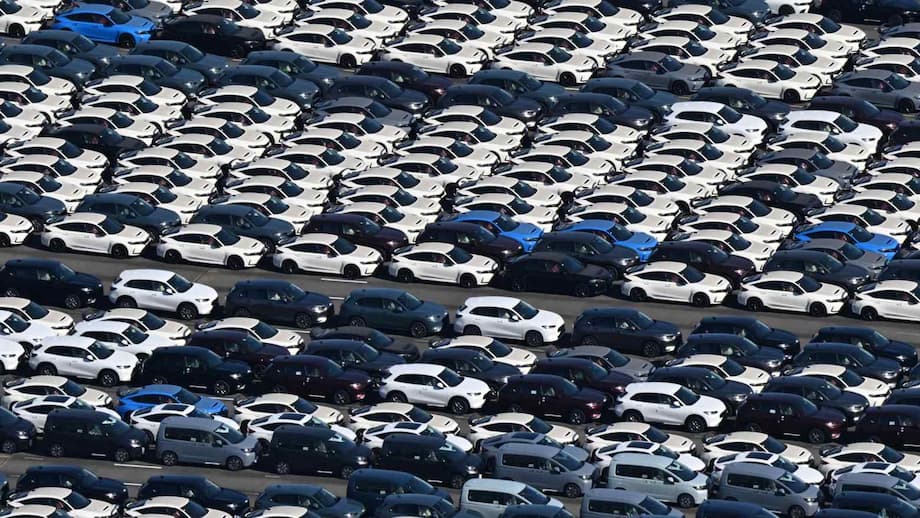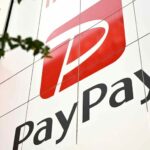Tariffs squeeze Japans parts suppliers as policy shifts again
A new survey by Nikkei shows more than 80 percent of major Japanese auto parts makers have either passed additional US import levies to their customers or are preparing to do it. The move reflects a tariff shock that has rippled through the global supply chain. In early May, Washington imposed a 25 percent duty on imported auto parts, layered on top of existing duties on metals and earlier automotive tariffs. For Japan, a precision components powerhouse that shipped about 32 billion dollars of auto parts to the United States in 2024, the policy hit margins overnight. Suppliers say there is little room to absorb the spike, so costs are moving up the chain to automakers and, eventually, to some buyers.
- Tariffs squeeze Japans parts suppliers as policy shifts again
- What exactly did Washington tariff and what got exempt
- Survey shows suppliers are passing costs to automakers
- Localization rush and new sourcing maps
- Are lower 15 percent tariffs finally arriving for Japan
- Stacking risk and compliance burdens
- What it means for US plants, dealers and repair shops
- How automakers are responding in Japan and the United States
- What this means for consumers and the next year
- Key Points
Parts sit at the center of vehicle manufacturing. Japan supplies roughly 27 percent of US engine imports and about 34 percent of transmissions, according to industry estimates and trade data. The new duties target hundreds of items, from engines and gearboxes to electrical components and braking systems. That breadth makes the impact wider than past levies on fully assembled vehicles. It also lands at a delicate moment as the sector spends heavily on electrification and software, while smaller suppliers face thinner financial buffers. Passing costs forward has become a survival tactic more than a strategic choice.
What exactly did Washington tariff and what got exempt
On May 3, the United States began enforcing a 25 percent tariff on more than 600 categories of auto parts. The list includes engines, transmissions, braking systems, steering, electronics, and battery components. Exemptions exist, but they are narrow. Parts that meet United States Mexico Canada Agreement content rules can avoid the full bite. Some components for classic cars older than 25 years also fall outside the new scope.
Scope of the 25 percent parts duty
The 25 percent duty applies to critical powertrain items and control electronics. Industry data show price steps that mirror the rate. A two point five liter inline four engine that sold for about 4,200 dollars before the change now lands near 5,250 dollars. A hybrid powertrain package jumped from 6,500 dollars to about 8,125 dollars. An electronic control unit that cost 220 dollars rose to roughly 275 dollars per unit. The tariff adds nearly 1,875 dollars to a 7,500 dollar EV battery pack. These costs flow into about 1.2 million vehicles assembled in the United States each year that use Japanese electronics and batteries.
USMCA content and special cases
Some importers can blunt the increase. USMCA rules allow duty treatment based on regional content. For many parts, at least 55 percent North American content is required to qualify. Automakers that assemble vehicles in the United States may also access a temporary import adjustment program, but only if they raise USMCA compliant content to about 85 percent by 2026. Few are there today. Analysts estimate only about 12 percent of US assembled models meet that level. In practice, that means many shipments still face the full 25 percent rate while companies race to retool sourcing.
Survey shows suppliers are passing costs to automakers
Nikkeis polling captures how suppliers have responded. More than four in five large parts makers in Japan reported they have raised prices to cover higher duties or plan to do so. Tier one suppliers that ship directly to automakers tend to move fastest, but pressure spreads down the chain to smaller tier twos and threes. In many cases, automakers accept the adjustments to keep production schedules intact, while seeking offsets elsewhere.
On the ground, price lists are changing. Brake kits that sold for roughly 400 dollars now cost near 500 dollars. Suspension sets moved from about 1,200 dollars to 1,500 dollars. A Nissan factory in Tennessee, which relied on Japanese continuously variable transmissions, faces about 2.1 million dollars in extra monthly costs. Managers have started shifting orders to Mexican plants to meet USMCA content thresholds and reduce duty exposure. Each change introduces lead time risks and validation work that can slow output.
Smaller suppliers bear the brunt. Many operate on thin margins and cannot finance fast relocations or dual sourcing. They also face overlapping challenges such as the transition to electric drive. That mix leaves less room to absorb tariffs, so passing costs to automakers becomes the default.
“Smaller players in the auto industry do not have levers they can pull to adjust to the tariffs,” said Michael Robinet, a vice president at S&P Global Mobility. “Tariffs are just an accelerator.”
That dynamic explains why many suppliers moved quickly to reset contract prices after May, and why more say they will follow.
Localization rush and new sourcing maps
Japanese groups are racing to increase North American output. Denso announced about 200 million dollars for expanded capacity in Tennessee, focused on electric and electronic modules. Aisin shifted a large share of eight speed automatic transmission production to Mexico and paired with local steel processors. The company says the plan brings content in the region to about 62 percent under USMCA rules, which helps hold down delivered prices for US customers.
Hotspots are emerging. Transmissions are clustering in Mexico. Battery packs and cathode materials are drawing investment in Canada. Alabama and other Southern states are scaling up suspension and chassis components. Sourcing shifts also favor contract terms that help cash flow, such as bulk discounts and consignment models that delay duty payments until parts are pulled for production.
Niche strategies are appearing at the edges. Parts for cars older than 25 years, including popular 1990s Japanese engines, have seen a jump in demand and prices. Collectors pay more for sought after units such as Nissan SR20DET engines. Startups that use additive manufacturing are filling gaps by printing small runs of hard to find components.
Are lower 15 percent tariffs finally arriving for Japan
Tokyo pressed Washington for clarity on tariff relief through mid summer. Japanese officials said they had secured a deal in July to reduce US tariffs on Japanese vehicles and parts to 15 percent. Confusion followed over whether the new rate would stack on top of earlier levies for some products. After weeks of back and forth, the White House signed an executive order on September 5 to implement the lower 15 percent rate and to confirm that the reduction would not stack with higher duties. The order applies retroactively from August 7 and takes effect seven days after publication. It also frames a 550 billion dollar Japanese investment program in the United States and increased purchases of American farm goods and aircraft.
That reduction matters, though it still leaves duties higher than they were at the start of the year. US automakers and lawmakers are watching how the relief is applied. South Korea, a major exporter with close ties to the US market, remains subject to a 25 percent automotive tariff while it waits for a similar executive order. The gap with Japan, even for a short period, could shape market share in key segments.
Executives say the shifting timeline has complicated planning.
Nissan chief executive Ivan Espinosa voiced the uncertainty in recent remarks about the coming change.
“It is still not clear to us what the conditions are, and when the change for tariffs from Japan to the U.S. will come into place,” he said.
Some analysts warn the lower rate still hurts.
Economist Richard Katz framed the relief in stark terms.
“You threaten to cut off both my legs, but you only amputated one. So we are happy?”
For suppliers, even a 15 percent rate means higher delivered costs unless they localize content. That is why pricing pressure on automakers is unlikely to disappear overnight.
Stacking risk and compliance burdens
Policy complexity has become a cost of its own. Analysts warn about tariff stacking, where multiple levies can apply to the same shipment. Research by the Center for Strategic and International Studies describes a system in which most favored nation rates, reciprocal tariffs and the new automotive duty can combine. Parts that cross borders several times during manufacturing can trigger charges at each crossing, multiplying the impact.
The administrative load is heavy. Companies must calculate regional content for each part number, document it and update it as suppliers change. If a vehicle does not meet USMCA content rules, it can face the full 25 percent rate on its non US content, or the 15 percent rate for Japan once the order takes effect. That accounting slows purchasing and complicates production schedules in North America.
What it means for US plants, dealers and repair shops
Several US assembly plants rely on Japanese components. Electronics and battery modules from Japan feed many American built models, including hybrids. The 25 percent tariff added about 1,875 dollars to a typical 7,500 dollar EV battery pack and pushed electronic control unit prices up by about 25 percent. These increments can pinch margins on models that already face tight profitability targets.
Service departments and independent repair shops feel it too. Brake kits that moved to about 500 dollars and suspension sets that now cost around 1,500 dollars affect insurance repair bills and out of pocket costs. Vehicle owners who maintain older models, a growing share in an aging US fleet, may see longer waits and higher quotes as suppliers shift sourcing.
New vehicle sticker prices may not jump in lockstep. Consumer analysts at Kelley Blue Book note that many cars and parts sold in the United States are already produced in North America and were already under substantial tariffs earlier in the year. Some of the latest measures filled gaps rather than rewriting the entire tariff landscape. That tempers the impact on average transaction prices, at least for now.
How automakers are responding in Japan and the United States
Japanese automakers have revised financial outlooks to reflect tariff costs and trade uncertainty. Toyota cut its operating profit forecast, citing a multibillion dollar tariff impact. Honda estimated a hit of about 3 billion dollars this year from tariffs on cars, parts and raw materials across the United States and other markets. Nissan reduced its expected damage but still projects about 2 billion dollars in costs tied to US tariffs.
At the supplier level, the mood swings between caution and pragmatism. Tetsuya Kimura, chief executive of Asahi Tekko, a long standing parts maker that feeds Lexus and Land Cruiser production lines, described his reaction when the 25 percent tariff landed.
“Is he actually going to do something like that?” Mr. Kimura recalled. “When it comes to how much impact these tariff rates will have, we do not have a calculus.”
US automakers see a different risk. Their lobby warns that metal and parts duties still raise domestic costs in ways that offset the Japan relief.
“US companies and workers are at a disadvantage due to a 50 percent tariff on steel and aluminum and a 25 percent tariff on parts and finished vehicles, except for some products covered under USMCA,” said Matt Blunt, president of the American Automotive Policy Council, which represents General Motors, Ford and Stellantis.
Politically, the Japan deal came alongside a package of Japanese investment commitments in US industries and assurances on farm purchases. That framing will influence how trade partners such as South Korea approach their own talks with Washington. Until similar orders are signed for other exporters, cost gaps will persist.
What this means for consumers and the next year
For buyers, there is a chance of modest price pressure on models that rely heavily on Japanese content, especially hybrids and vehicles with many imported electronics. The bigger near term effect shows up in service departments, where part costs have climbed. Extended warranties and service plans may also adjust as component prices move.
For suppliers, the strategy set is clearer than it was in the spring. Secure USMCA content where possible, invest in North American capacity for high value electronics and batteries, and renegotiate contracts to reflect duty risk. For automakers, the balancing act continues. Keep plants running at high utilization, localize content where the math allows, and pass through some costs without chilling demand.
Even after the September order, Japanese suppliers still face a 15 percent hurdle on many shipments until local content changes take hold. South Korean rivals face a higher rate while they wait for their own agreement. The resulting price gaps, if they persist, could move share in some segments. The supply chain will keep adjusting as companies test new sourcing and partners.
Key Points
- More than 80 percent of Japanese parts makers have passed or plan to pass US tariff costs to automakers, according to a Nikkei survey.
- The United States began a 25 percent tariff on auto parts in May 2025. A new order lowers the rate to 15 percent for Japan, retroactive to August 7 and non stacking, with effect seven days after publication.
- Parts prices have climbed. A typical engine rose from about 4,200 dollars to 5,250 dollars, a hybrid powertrain from 6,500 dollars to about 8,125 dollars, an ECU from 220 dollars to around 275 dollars, and an EV battery pack saw about 1,875 dollars added.
- Japanese suppliers are localizing. Denso is investing about 200 million dollars in Tennessee. Aisin shifted transmissions to Mexico and reports about 62 percent USMCA content.
- USMCA thresholds and a temporary import adjustment program push content toward about 85 percent by 2026. Only a small share of US built vehicles meet that level today.
- US automakers warn that steel, aluminum and parts duties keep their costs high despite Japan relief. South Korea remains at 25 percent while it awaits a similar order.
- Repair shops and do it yourself consumers face higher parts bills. Average new car prices may see only mild effects because many models are already built in North America.
- Policy complexity and tariff stacking risks continue to weigh on planning across the auto supply chain.




